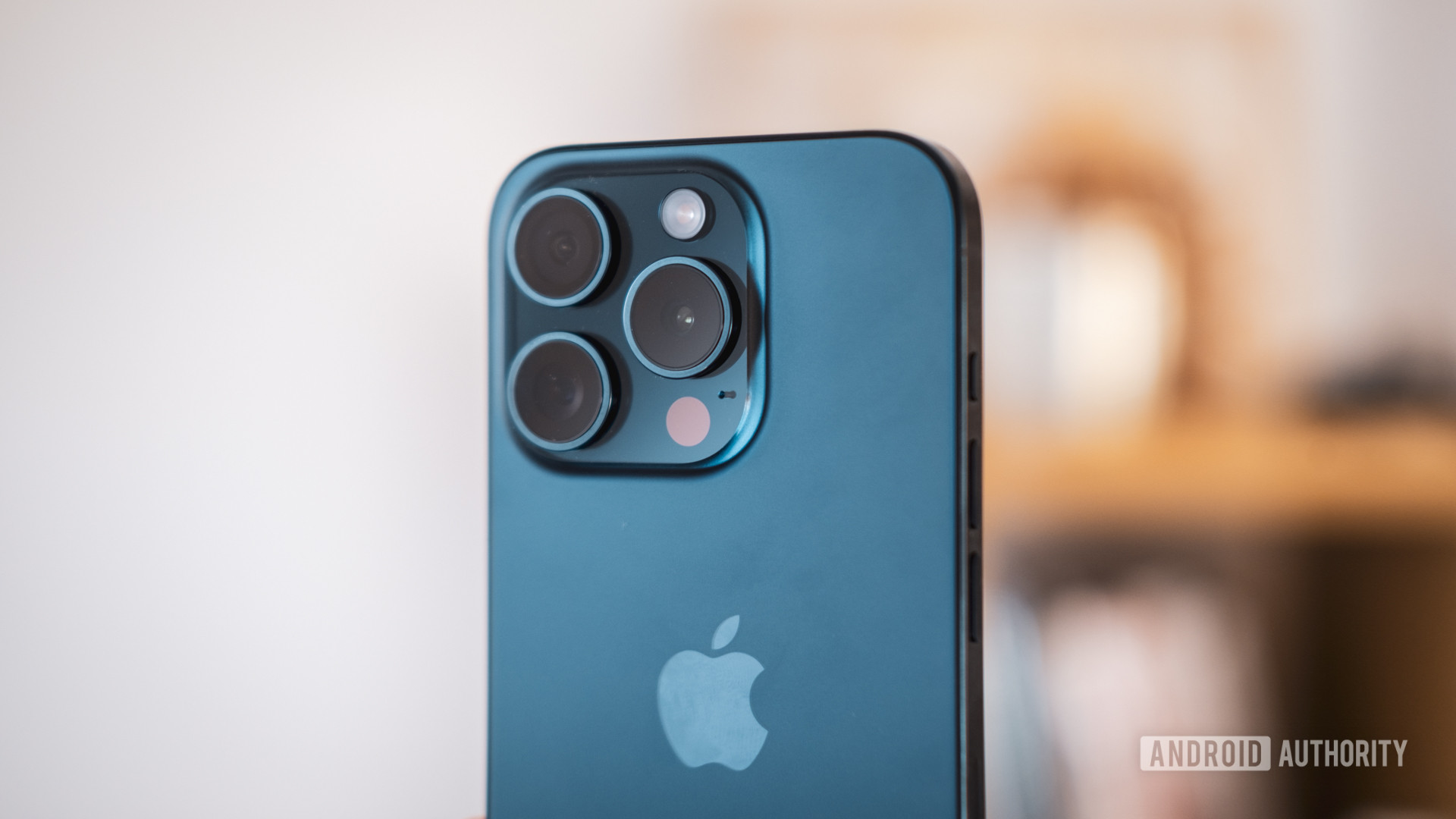Affiliate links on Android Authority may earn us a commission. Learn more.
The iPhone 16 Pro could catch up to top Android cameras with this addition

- The iPhone 16 Pro series could gain a so-called ALD lens coating.
- This coating should reduce lens flare and glare in photos.
- Xiaomi and OPPO already use ALD lens coatings, while Sony and vivo use similarly advanced coatings.
The iPhone 16 series is expected to launch in Q3 2024, and there’s been no shortage of rumors already. The latest leak suggests that Apple’s new phones could catch up to the best Android camera phones with a new lens-related addition.
Korean blogger yeux1122 claimed on Naver (h/t: MacRumors) that Apple is testing a new camera lens coating for the iPhone 16 Pro series. More specifically, the blogger suggests that this is an atomic layer deposition (ALD) lens coating and will help reduce lens flare.
The iPhone 15 Pro line reportedly offers a “nano-scale” coating to reduce lens flare too, but reports online suggest that the cameras are still prone to this issue. So a more advanced lens coating could help tame these artifacts and improve overall image quality.
Nothing new for Android phones
Apple wouldn’t be the first smartphone brand to embrace ALD lens coatings, though. Xiaomi was one of the first to use the coating back in 2022 with the Xiaomi 12S Ultra. It’s since been used by high-end phones such as the Xiaomi 13 Pro, Xiaomi 13 Ultra, Xiaomi 14, and the most recent Xiaomi 14 Ultra. The company also brought ALD coatings to much cheaper phones, such as the ~$550 Redmi Note 12 Pro Plus and the ~$300 Redmi Note 13 Pro 5G. Xiaomi isn’t the only Android OEM to use this tech, either, as OPPO’s upper mid-range Reno 10 series has this coating too.
We’ve also seen brands like Sony and vivo offering ZEISS’s T* lens coating to reduce glare. This was pretty noticeable when I compared the Pixel 7 Pro to the vivo X90 Pro (see the image comparison above). I prefer the Pixel’s image overall as the vivo shot is more washed-out and over-sharpened, but the light sources are impressively tamed on the vivo image to the point that you can see the elements in the light bulbs. The red flare on the left side of the Pixel image is also gone in the vivo snap.
So advanced lens coatings clearly aren’t new for several Android manufacturers. Nevertheless, we hope Apple does indeed embrace this tech as it would address a long-standing issue for some iPhone owners.